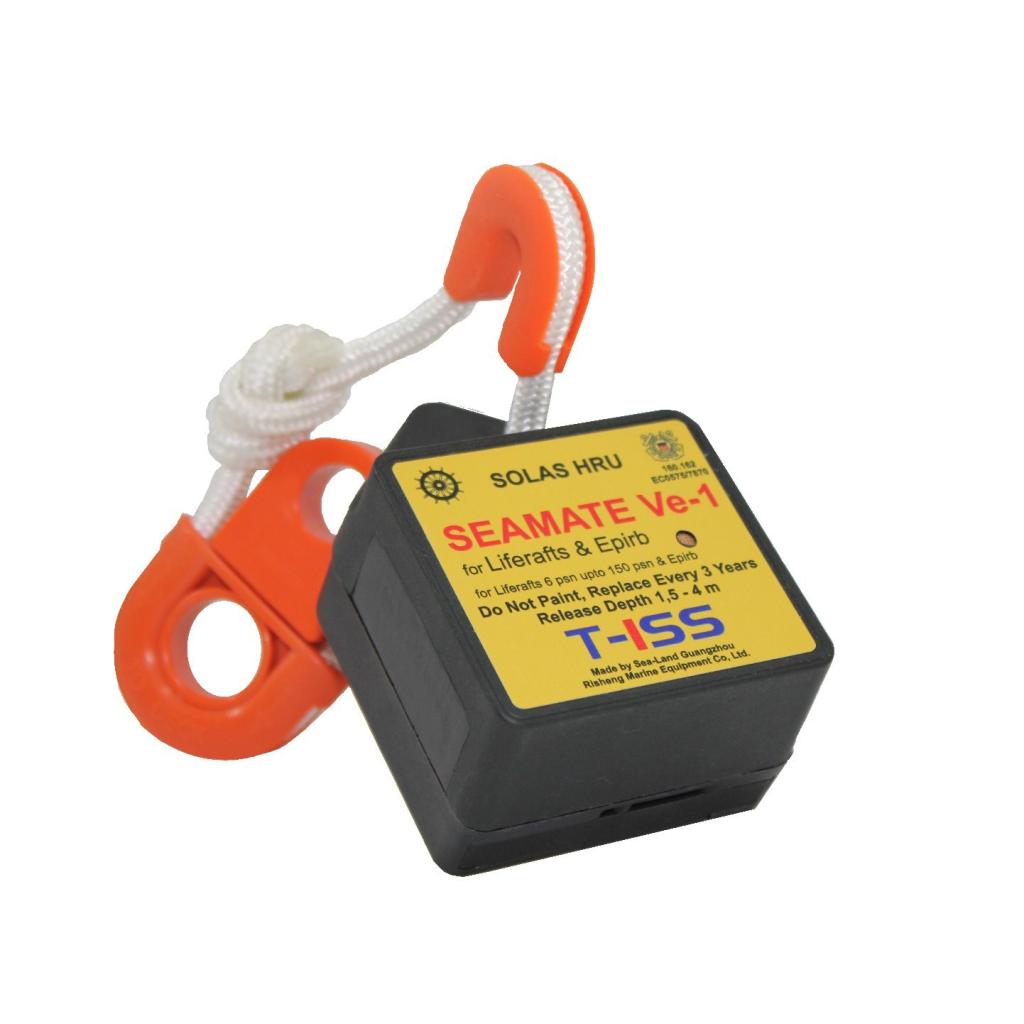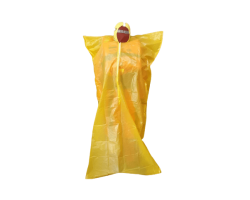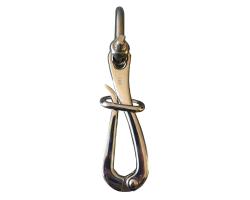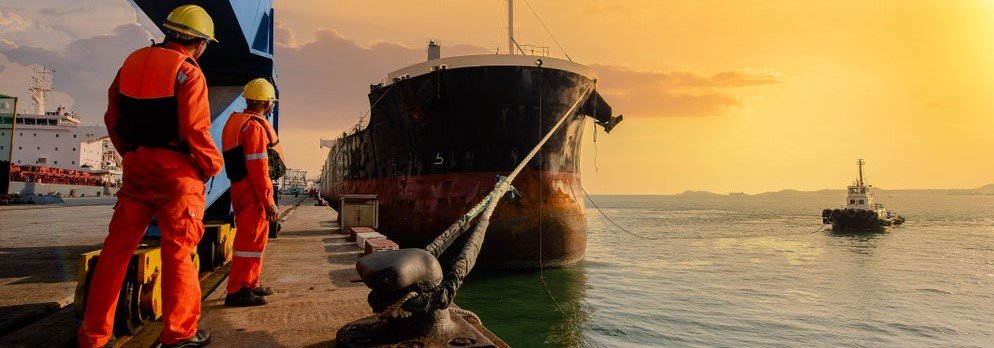Seamate Ve-1 Hydrostatic Release Units (HRU) - Automatic release HRU for Life Rafts and EPIRBs - T-ISS SeaMate Ve-1 Hydrostatic Release Unit
The SeaMate Ve-1 Hydrostatic Release Unit (HRU) is designed to perform reliably in all conditions, from extreme heat to polar environments. Approved by SOLAS, MED, and USCG, this HRU ensures automatic release of life rafts and EPIRBs (Emergency Position-Indicating Radio Beacons) in the event of a vessel sinking. With its innovative, cost-effective design, the SeaMate Ve-1 offers a lifespan of 3 years, surpassing the common 2-year expiry and reducing environmental impact.
An EPIRB model is also available, complete with the necessary bolt and nut for secure attachment to your vessel.
SeaMate Ve-1 Hydrostatic Release Units - Automatic life raft and EPIRB release solution - SeaMate Ve-1: HRUs for Life Rafts and EPIRBs
The SeaMate Ve-1 Hydrostatic Release Unit has the Red Ensign Mark from the UK MCA, showing it meets strict UK marine safety standards. This means the SeaMate Ve-1 follows the tough safety rules set by the UK Maritime and Coastguard Agency (MCA). It’s built for great reliability and environmental friendliness, lasting 3 years instead of the usual 2. It can also work with remote release systems. You can get it for life rafts or EPIRBs, with the EPIRB version coming with a bolt and nut for easy setup. The SeaMate Ve-1 is a top choice for reliable and compliant marine safety equipment.
How Does the SeaMate Ve-1 HRU Stand Out?
Most hydrostatic release units need replacing every 2 years. The T-ISS Seamate Ve-1 HRU lasts 3 years, offering:
- Cost savings: Fewer replacements mean you save money and time.
- Efficiency: Less maintenance needed, so you can focus on work while staying safe.
- Reliability: Built tough for long-lasting performance.
Key Features & Equipment Benefits:
- All-Conditions Operation: Designed for extreme heat to polar environments; ensures reliable performance in any weather condition.
- Automatic Release Feature: Automatically releases life rafts and EPIRBs when the vessel sinks; enhances safety during emergencies.
- Seamate Ve-1 Extended Expiry Life: 3-year expiry life; reduces replacement frequency and lowers costs compared to the standard 2-year models.
- Environmental Impact: Reduced environmental footprint; fewer replacements mean less waste.
- Remote Release Capability: Compatible with remote release systems; allows for remote activation of life rafts.
- EPIRB Model Available: Includes bolt and nut for easy installation; provides additional safety for EPIRB equipment.
- Versatile Models: Available in various types including basic models for different passenger capacities, EPIRB, remote-release, and combi models.
- Approval Certifications: Approved by Russian Register, DNV, USCG, Korean Government, Japan Government, and UK MCA Red Ensign MER; ensures adherence to international safety standards.
- Compliance: In compliance with ISO 15734; meets recognized safety and quality standards.
- HRU Hooks: Made from SS316 with a breaking strength that complies with ISO 6892; suitable for various HRU models and packed in sets of 10.
Technical Information:
- Dimensions: 165 x 75 x 65 mm
- Weight: Approx. 0.25 kg
- Expiry Life: 3 years
- Hook Material: SS316
- Hook Breaking Strength: Complies with ISO 6892
- Standards Compliance: ISO 15734
- Russian Register
- DNV
- USCG
- Korean Government
- Japan Government
- UK MCA Red Ensign MER
SPECIFICATION
-
Product: T-ISS SeaMate Ve-1 Hydrostatic Release Unit (HRU)
-
Operation: Reliable in extreme heat to polar environments
-
Automatic Release: Activates life rafts and EPIRBs when vessel sinks
-
Expiry Life: 3 years; fewer replacements and lower costs
-
Environmental Impact: Reduced footprint due to longer lifespan
-
Remote Release: Compatible with remote activation systems
-
EPIRB Model: Includes bolt and nut for easy installation
-
Models Available: Basic for 6-150 pax, Basic for 1-12 pax, EPIRB, Remote-release, Combi
-
Approvals: Russian Register, DNV, USCG, Korean Government, Japan Government, UK MCA Red Ensign MER
-
Compliance: ISO 15734
-
Dimensions: 165 x 75 x 65 mm
-
Weight: Approx. 0.25 kg
-
Hook Material: SS316, breaking strength complies with ISO 6892
Every VE-1 Seamate HRU is tested according to USCG Regulations and IMO standards.
Wheelmark Approved by DNV Module B & D according to Regulations & Standards & Council Directive 96/98/EC
SOLAS 74 as amended, Regulation III/4, III/13, III/26, III/34 and X/III, LSA code IMO MSC/CIRC 811 and 2000 HSC code 8.
Red Ensign Mark of Conformity Assessment (UK MCA): The SeaMate Ve-1 now carries the Red Ensign UK conformity mark for marine equipment, indicating that it is UK approved to be placed on board UK vessels
Contact Us
Need any help? Get in touch with an expert via the contact form below.












